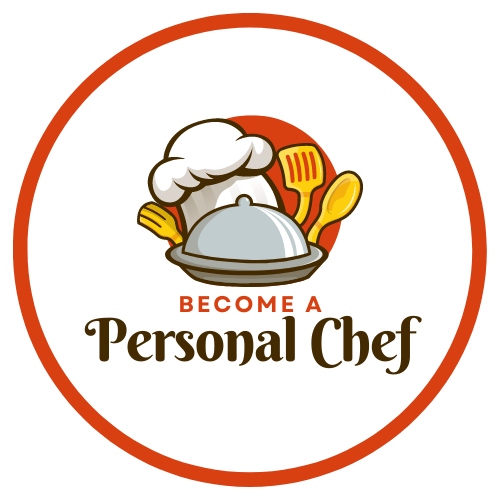Table of Contents
ToggleItalian Food For Personal Chefs
As personal chefs, we are on a constant culinary adventure, seeking new flavors and cuisines to add to our repertoire. Today, we embark on a journey to Italy, a country renowned for its rich food culture and culinary heritage. From the rolling hills of Tuscany to the vibrant streets of Rome, Italy is a treasure trove of gastronomic delights. And as your personal chef, I am excited to bring these flavors and dishes into your home.
Italian cuisine is deeply rooted in tradition and family. Each region has its own unique specialties, passed down from generation to generation. For me, Italian cooking represents comfort and simplicity – using fresh, quality ingredients to create delicious meals that warm the soul.
One of the key aspects of Italian cuisine is its focus on seasonal produce. This means that each dish is made with ingredients that are at their peak freshness and flavor, resulting in a truly authentic taste experience.
Aspiring personal chefs need to offer something different than traditional chefs who specialize in one or two kinds of cuisines. I’ve written an extensive article with links to many cuisines for your consideration – World Cuisine for Personal Chefs
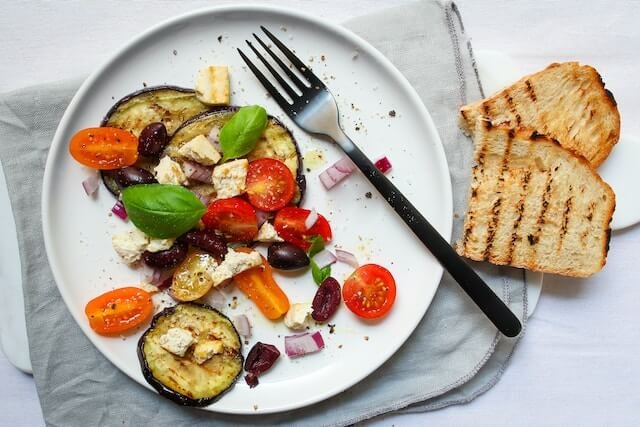
Key Ingredients in Italian Cuisine
Italian cuisine is characterized by its simplicity, with many dishes having only four to eight ingredients. Some of the key ingredients include olive oil, tomatoes, garlic, oregano, basil, cheese (like mozzarella, parmesan, and provola), pasta, balsamic vinegar, mushrooms, lemons, semolina flour, red wine, and for some recipes, chili.
Olive oil is the backbone of Italian cuisine, used in almost every dish. It not only adds flavor but also has many health benefits, such as being high in monounsaturated fats which can help lower cholesterol levels. Tomatoes are another staple ingredient in Italian cooking, whether fresh or canned they add a rich and tangy flavor to sauces and soups.
Garlic is a must-have ingredient in Italian cuisine, it adds depth of flavor to dishes like pasta sauces and roasted meats. Oregano is a popular herb in Italian cooking, often used dried to add earthiness and aroma to dishes like pizza and tomato-based sauces. Basil is another essential herb that brings freshness and sweetness to dishes like pesto sauce.
Cheese plays a significant role in Italian cuisine, with varieties like parmesan, mozzarella, and ricotta being widely used. Parmigiano Reggiano, also known as the “King of Cheeses,” is a hard cheese often grated over pasta dishes for added flavor. Mozzarella is a soft and creamy cheese that is perfect for topping pizzas or adding to salads. Ricotta cheese can be used in both savory and sweet dishes, such as lasagna or cannoli.
Italian cooking also includes a variety of meats, such as prosciutto, pancetta, and salami. These cured meats add intense flavors to dishes like pastas and sandwiches. Seafood is also prevalent in coastal regions of Italy, with popular dishes like linguine alle vongole (linguine with clams) and scampi alla griglia (grilled shrimp).
Fresh herbs are a staple in Italian cuisine, adding depth and complexity to dishes. Basil, oregano, rosemary, and thyme are commonly used in pastas, sauces, and marinades. Garlic is also widely used in Italian cooking, whether minced or roasted whole for added flavor.
Vegetables play an important role in Italian cooking as well. Tomatoes are a key ingredient in many dishes, from pasta sauces to bruschetta. Other popular vegetables include eggplant, zucchini, and bell peppers. These can be enjoyed roasted or grilled as sides or incorporated into main dishes. Italian Food For Personal Chefs
Sourcing Ingredients Locally
While most of these ingredients can be found in local supermarkets, some might require a trip to a specialty Italian grocery store. If certain ingredients are not available locally, suitable substitutes can often be found. For instance, you could substitute pecorino cheese for parmesan in a pinch.
At The Organic Personal Chef, I was committed to sourcing our ingredients locally whenever possible. Not only does this support our local economy and small businesses, but it also ensures that our ingredients were fresh and of the highest quality. I believe in using seasonal produce and incorporating it into our menus whenever possible.
Not only is sourcing locally beneficial for the community and environment, but it also allows us to create unique dishes based on what’s in season. This means you’ll get to experience a variety of flavors throughout the year, as well as supporting sustainable farming practices.
I would take the time to research and build relationships with local farmers, meat producers, and other suppliers. This not only guarantees top-notch ingredients for our clients but also helps us stay connected to our food sources.
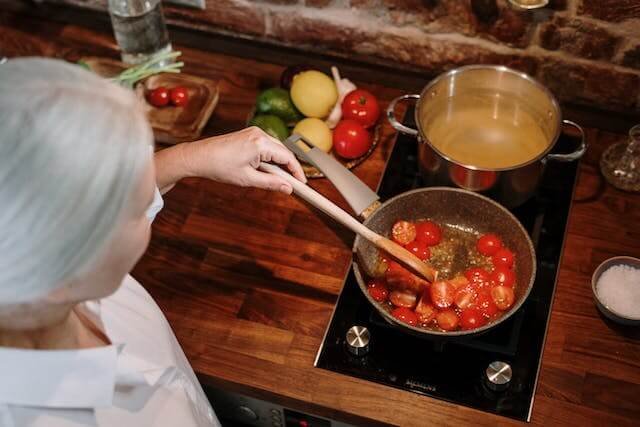
Traditional Cooking Methods
Italian cuisine employs a variety of cooking methods, including boiling (for pasta), baking (for dishes like lasagna), sautéing, and slow-cooking for sauces like ragu. While these methods may seem basic, they are the foundation of Italian cooking and are essential for creating authentic and delicious dishes.
At The Organic Personal Chef, I believed in using traditional cooking methods to create the Italian-inspired meals. This means taking the time to slow-cook my sauces to develop rich flavors and using fresh, high-quality ingredients to bring out the best in each dish.
Slow-Cooking
In Italian cuisine, slow-cooking is a widely used method that involves simmering ingredients over low heat for an extended period of time. This allows the flavors to fully develop and meld together, resulting in a depth of flavor that cannot be achieved through other cooking techniques.
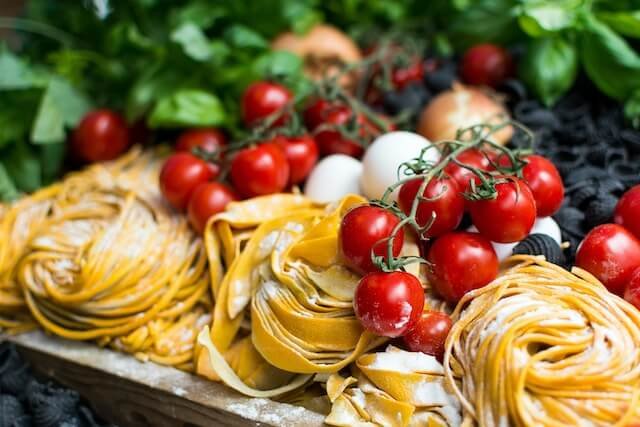
Dominant Flavors of Italian Cuisine
Italian cuisine is known for its bold yet balanced flavors, where the quality of the ingredients often shines through. It often combines savory, sweet, and tangy elements, creating a depth of flavor that is both complex and comforting. In this article, we’ll explore some of the dominant flavors in Italian cuisine and how they are used to create traditional dishes.
Tomato
Perhaps the most iconic ingredient in Italian cooking, tomatoes are a staple in many dishes. Whether fresh or canned, their sweet and tangy flavor adds a burst of freshness to pastas, sauces, and soups. Tomatoes also play an important role in balancing out the richness of other ingredients such as cheese or cured meats.
Basil
Basil is another essential ingredient in Italian cuisine, often used fresh as a finishing touch or infused into oils and sauces. Its distinct peppery and slightly sweet flavor adds a bright note to many dishes, particularly with tomato-based sauces like marinara or pesto.
Garlic
Known for its pungent and aromatic flavor, garlic is a key player in many Italian dishes. It can be used in both raw and cooked forms to add depth and complexity to sauces, meat dishes, and even pizza. In fact, garlic is so beloved in Italian cooking that it has been referred to as the “stinking rose.”
Olive Oil
While not necessarily a flavor itself, olive oil is an essential ingredient in Italian cuisine for its rich and fruity character. It serves as the base for many sauces and dressings, adding a silky texture and enhancing the flavors of other ingredients.
Parmigiano-Reggiano
Considered the king of cheeses, this hard and nutty cheese is commonly grated over pastas or used as a topping for salads and soups. Made from the milk of grass-fed cows in the Emilia-Romagna region of Italy, Parmigiano-Reggiano is known for its distinct flavor and high quality.
Pasta
No list of Italian ingredients would be complete without pasta. Made from durum wheat flour, water, and sometimes eggs, pasta is a staple in Italian cuisine. From classic spaghetti to hearty lasagna, there are countless varieties of pasta to choose from.
Spice Level Adjustment
While not all Italian cuisine is spicy, chilies are used in some recipes. The spice level can usually be adjusted to suit your client’s preference by using fewer chilies or eliminating them altogether.
However, some dishes may rely on the heat from chilies for their flavor profile. In these cases, it is important to communicate with your client and discuss alternative options that still provide a similar level of intensity without compromising the overall taste.

Cultural Significance of Italian Cuisine
Food plays a central role in Italian culture and is often tied to regional traditions and celebrations. For example, specific dishes are often associated with certain holidays, like panettone at Christmas. This cultural significance of food in Italy can be traced back to ancient times.
The history of Italian cuisine dates back to the Roman Empire, where the wealthy indulged in lavish feasts and banquets. However, it was during the Renaissance period that Italian cuisine truly began to take shape. The revival of classical learning and interest in art and science led to a renewed focus on food and its preparation.
As Italy became more unified during the 19th century, regional cuisines started to blend together, creating what is now known as “Italian cuisine.” Each region has its own unique specialties and ingredients, but there are commonalities that tie all Italian dishes together: simplicity, freshness, and high-quality ingredients.
One of the key elements of Italian cuisine is the use of fresh, seasonal ingredients. Italians take pride in their produce and meats, often sourcing them from local markets or growing them in their own gardens. This emphasis on freshness allows for dishes to have a vibrant and authentic taste.
Another defining aspect of Italian cuisine is its simplicity. The focus is on allowing the natural flavors of the ingredients to shine through, rather than masking them with heavy sauces or complicated cooking techniques. This means that even simple dishes like pasta with fresh tomato sauce can be bursting with flavor and satisfaction.
Of course, no discussion of Italian cuisine would be complete without mentioning pasta. While it may seem like a staple in every Italian dish, pasta actually has its origins in China before being introduced to Italy by Marco Polo in the 13th century. From there, it quickly became a favorite among Italians and has evolved into the multitude of shapes and varieties we know today.
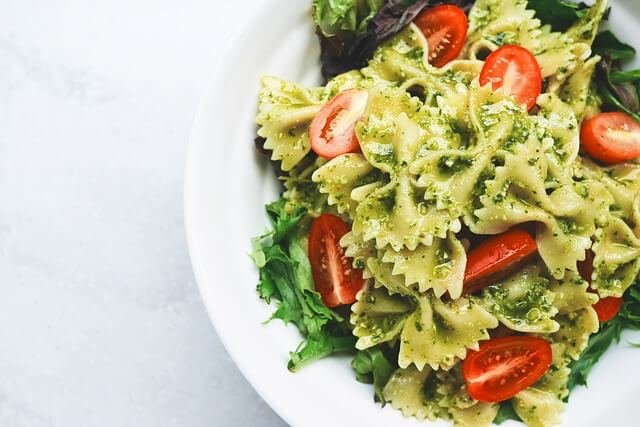
Dietary Considerations
When preparing Italian cuisine, it’s important to consider dietary restrictions. Many Italian dishes can be made vegetarian or vegan-friendly, and gluten-free pasta options are also available. Here are some tips for accommodating dietary considerations in your Italian cooking:
Vegetarian and Vegan Options:
There are many delicious vegetarian and vegan options in traditional Italian cuisine. For example, you can substitute meat-based pasta sauces with a variety of vegetable-based ones like marinara sauce or aglio e olio (garlic and olive oil). You can also make vegan versions of classic dishes like lasagna by using tofu or lentils instead of cheese.
Gluten-Free Pasta:
While pasta is a staple in Italian cooking, there are now many gluten-free options available for those who have celiac disease or gluten intolerance. Look for pastas made from alternative flours such as rice, quinoa, or chickpea flour. These pastas have a similar texture and taste to traditional pasta, making it easier for those with dietary restrictions to still enjoy their favorite Italian dishes.
Alternative Grains:
In addition to gluten-free pasta, there are also many other alternative grains that can be used in Italian cooking. Farro, quinoa, and polenta are all great options that add a unique flavor and texture to dishes like risotto or soups. These grains are also high in protein and fiber, making them a healthier choice compared to white rice or pasta.
Dairy-Free Cheese:
For those who are lactose intolerant or follow a dairy-free diet, you don’t have to miss out on the creamy goodness of cheese in your Italian meals. There are now many dairy-free cheese options made from nuts, such as cashew or almond cheese, that melt and taste just like traditional cheese. You can also opt for vegan parmesan or mozzarella to add a cheesy touch to your dishes.
Plant-Based Meat Alternatives:
From meatballs to sausage, there are now many plant-based alternatives that mimic the taste and texture of traditional Italian meats. These options are not only great for those following a vegetarian or vegan diet, but they are also lower in saturated fat and cholesterol compared to their meat counterparts. Try using lentils, mushrooms, or tofu in place of meat in classic Italian recipes like lasagna or bolognese sauce.
Homemade Sauces:
Many store-bought pasta sauces contain high amounts of added sugars and preservatives. By making your own sauces at home, you can control the ingredients and create a healthier option for your Italian dishes. Consider using fresh tomatoes, herbs, and spices to create a flavorful tomato sauce or try making a creamy pesto sauce with cashews as a base.
Incorporating Whole Grains:
Traditional Italian cuisine is known for its heavy use of refined carbohydrates like white pasta and bread. However, by incorporating whole grains into your meals, you can add more fiber and nutrients to your dishes. Try swapping out traditional pasta for whole wheat or quinoa pasta, or using whole grain breadcrumbs in place of regular ones when making breaded dishes.
Adding More Vegetables:
Vegetables are an essential part of any healthy diet, and they can easily be incorporated into Italian cuisine. Consider adding roasted vegetables to your pasta dishes, or using zucchini noodles in place of traditional pasta. You can also add more veggies to your sauces and soups for added flavor and nutrition.
Using Lean Proteins:
Traditionally, Italian dishes are heavy on meat, but you can create healthier options by using leaner proteins such as chicken, fish, or tofu. Try making a grilled chicken parmesan instead of a fried one, or adding shrimp to your pasta instead of sausage or beef.
Experimenting with Herbs and Spices:
Herbs and spices are not only flavorful additions to Italian dishes; they also provide numerous health benefits. Instead of relying on salt for flavor, try experimenting with different herbs like basil, oregano, and thyme. You can also add a kick of heat with red pepper flakes or paprika.
Portion Control:
Italian cuisine is known for its generous portions, but it’s important to practice portion control when trying to maintain a healthy diet. Consider using smaller plates and measuring out appropriate serving sizes to avoid overeating.
Don’t Forget About Dessert:
Just because you’re trying to eat healthily doesn’t mean you have to give up dessert altogether. Instead of indulging in rich, creamy desserts, opt for lighter options like fruit-based sorbets or homemade gelato made with natural ingredients.

Health Considerations
While some Italian dishes can be high in fat and carbohydrates, the Mediterranean diet is considered one of the healthiest in the world. To make Italian meals healthier, consider using whole grain pasta, adding more vegetables, and controlling portion sizes. Another key factor in maintaining a nutritious Italian meal is the use of fresh, organic ingredients.
Whole Grain Pasta
Traditional pasta made from refined white flour can be high in carbohydrates and low in nutrients. By switching to whole grain pasta, you can increase the fiber and nutrient content of your dish while also creating a heartier texture. Whole grain pasta is also lower on the glycemic index, meaning it won’t cause spikes in blood sugar levels like refined white flour products do.
Adding More Vegetables
Incorporating more vegetables into your Italian dishes not only adds flavor and texture but also boosts their nutritional value. Vegetables are packed with essential vitamins, minerals, and antioxidants that are important for maintaining good health. You can add vegetables to dishes such as lasagna, spaghetti carbonara, and even meatballs to create a more well-rounded and nutrient-dense meal.
Using Healthy Oils
Instead of using butter or vegetable oil in your pasta dishes, try switching to healthier options such as olive oil or avocado oil. These oils are rich in monounsaturated fats which can help lower cholesterol levels and reduce the risk of heart disease. They also add a delicious flavor to your dishes and can be used for sautéing vegetables, making sauces, and dressing salads.
Incorporating Lean Proteins
Traditionally, Italian dishes are heavy on meats like pork and beef. However, by incorporating lean proteins such as chicken, turkey, or seafood into your recipes, you can reduce the amount of saturated fats consumed. These proteins are also excellent sources of essential nutrients like protein, omega-3 fatty acids, and vitamins.
Maximizing Flavor with Fresh Herbs
One of the best ways to add flavor to your Italian dishes without adding extra sodium or unhealthy seasonings is by using fresh herbs. Basil, oregano, thyme, parsley, and rosemary are all common herbs used in Italian cuisine that not only provide a burst of flavor but also have added health benefits. For example, basil has anti-inflammatory properties while rosemary may improve digestion and brain function.

Traditional Accompaniments
Italian meals often start with an antipasto (appetizer), followed by primo (first course, usually pasta or risotto), secondo (second course, usually meat or fish), and dolce (dessert). Wine is commonly served with meals.
When planning an Italian meal, it is important to consider traditional accompaniments that add depth and flavor to the dishes. These accompaniments not only enhance the taste of the main courses but also provide a glimpse into the rich cultural heritage of Italy.
Presentation
In Italian cuisine, the presentation is almost as important as the taste. Dishes are often simply but beautifully presented, with fresh ingredients taking center stage. The same concept applies to our brand – we believe that presentation matters just as much as the quality of our food.
Attention to detail is also a key aspect of your brand’s presentation. From the way we carefully chop and arrange ingredients on a plate to the way you present your meals to your client, every step is executed with precision and care. We want our clients to feel like they are receiving a personalized meal made just for them.
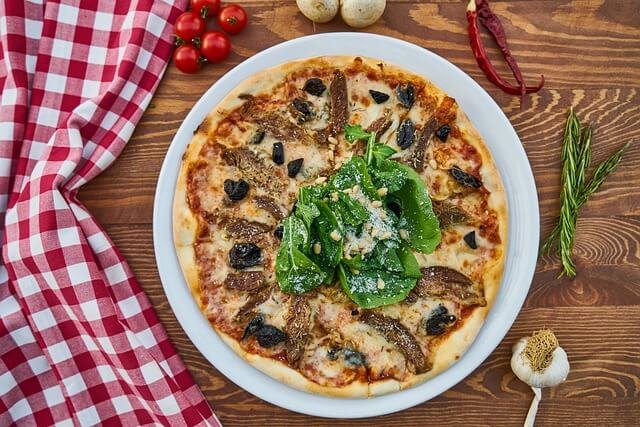
Common Variations
Italy’s diverse regions each have their unique flavors and dishes. For example, Northern Italian cuisine often features butter and cream sauces, while Southern Italian cuisine tends to use more olive oil and tomato-based sauces. Central Italy is known for its simplicity and focus on fresh ingredients, while the islands of Sicily and Sardinia have their own distinct styles, with influences from Mediterranean and North African cuisines.
Traditional Italian dishes such as pizza, pasta, and risotto are popular all over the world, but there are also many lesser-known regional dishes that are just as delicious. From hearty Tuscan bean soups to delicate Venetian seafood pastas, each dish tells a story of the land it comes from and the people who have perfected it over generations.
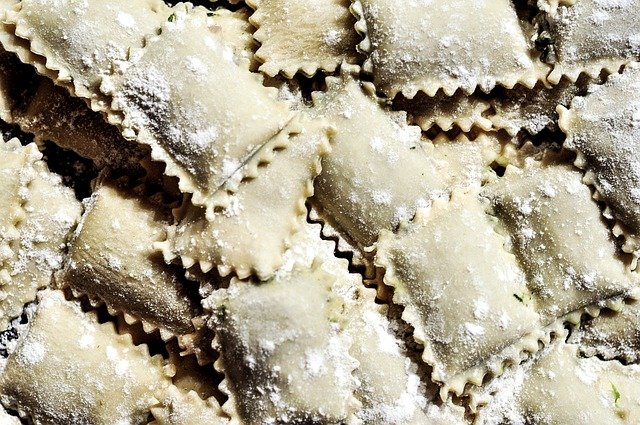
Preparation and Equipment
Some Italian dishes may require specific equipment, like a pasta maker for homemade pasta. Certain elements of a dish, like dough or sauces, may need to be prepared ahead of time. It’s important to have all necessary equipment and ingredients ready before beginning the cooking process. This not only ensures a smooth cooking experience but also allows for better time management.
Here’s a comprehensive list of essential items a personal chef might need to prepare Italian cuisine:
A high-quality chef’s knife is essential for chopping herbs, dicing vegetables, and slicing meats. Consider a brand like Wüsthof or Victorinox for durable and sharp options. Here’s a chef knife on Amazon
Ideal for small, precision tasks like peeling and trimming. Find a great paring knife here
Perfect for slicing through crusty Italian bread without crushing it. Lightweight, precisely balanced 8-3/4-inch bread knife
Essential for rolling out pasta dough to the perfect thickness. Rolling Pin on Amazon
Choose a sturdy wooden or bamboo cutting board that won’t dull your knives.
A must-have for making fresh pasta. It allows you to roll out your dough and cut it into various shapes. Pasta Maker – Traditional pasta roller lets you make the freshest pasta you’ve ever tasted right
If you plan on making stuffed pasta, a ravioli cutter will help create perfectly shaped pockets. Ravioli Stamp Maker Cutter with Roller Wheel Set on Amazon
Great for cooking down sauces and sautéing vegetables. Look for a pan with high sides to prevent spills. Sauté Pan I like
Ideal for slow-cooking sauces and stews. The Lodge Dutch Oven not only makes your kitchen look good but is an enameled cast iron classic great for preparing and serving memorable meals
Needed for boiling pasta. It should be big enough to allow the pasta to move freely while cooking. All-Clad 3-Ply Stainless Steel Stockpot 8 Quart
For draining cooked pasta. This colander is constructed from high-quality stainless steel that strains and rinses effortlessly with its perforated design.
Useful for stirring sauces and pasta to prevent sticking. The OXO Good Grips 3-Piece Wooden Utensil Set includes our Spoon, Turner, and Slotted Spoon.
To serve soups and sauces. All-Clad Professional Stainless Steel Kitchen Gadgets and Caddy 6 Piece Kitchen Tools
Needed for grating hard cheeses like Parmigiano-Reggiano. Professional Cheese Grater
Much quicker and easier than mincing garlic by hand. The Hand Grater has a razor-sharp stainless steel blade that won’t rust and a comfortable, non-slip handle.
Freshly ground pepper has much more flavor than pre-ground. The sleek and stylish OXO Good Grips Pepper Grinder is an ideal addition to any kitchen or dining table.
Precise measurements are key to a successful dish. Complete set of 11 premium stainless steel measuring cups and spoons set
Choose a set with a range of sizes. Meal Prep Stainless Steel Mixing Bowls Set
Needed for baking Italian desserts or roasting vegetables. Top-rated NaturalsBakeware collection is made of pure aluminum for superior heat conductivity and produces consistent evenly browned baked goods every time.
If pizza is on the menu, a pizza stone will help you achieve a crispy crust. Our very best pizza stone formulated from toughened porous cordierite stone.
Wondering what tools a personal chef might need? I’ve written an extensive article for you – A Comprehensive List Of Must-Have Tools and Essential Items for the Personal Chef
Remember, the quality of your tools can make a big difference in the ease and success of your cooking. It’s worth investing in high-quality items that will last.
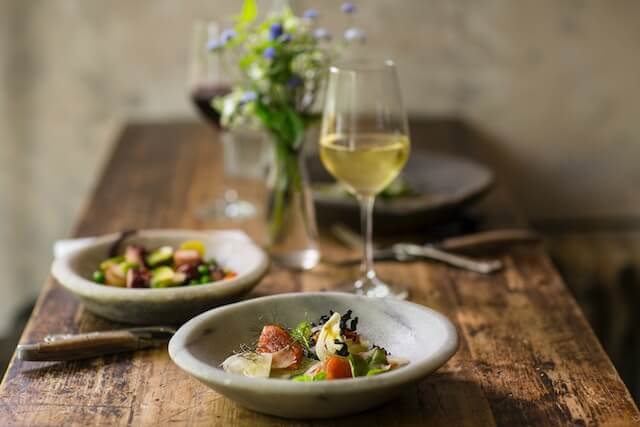
Personalizing Italian Cuisine
Personalizing Italian dishes while maintaining authenticity can be achieved by adjusting flavors to suit personal preferences, substituting ingredients based on dietary needs, or presenting dishes in creative ways. As a personal chef, I understand the importance of creating dishes that cater to each individual’s tastes and dietary requirements. My passion for Italian cuisine and my client-focused approach allow me to provide a personalized dining experience for every client.
Flavors are an essential element of any dish, including Italian food. Everyone has their preferred level of spice, sweetness, or acidity. With my expertise in Italian cooking techniques, I can customize dishes based on your flavor preferences. Whether they prefer mild flavors or bold spices, I will tailor the seasoning to suit their taste buds perfectly.
Italian Cuisine For Personal Chefs
In conclusion, exploring and cooking Italian cuisine offers a rewarding culinary journey. By understanding its key ingredients, techniques, and cultural significance, we can bring the authentic taste of Italy to our clients’ dining tables. As personal chefs, it is our duty to continuously expand our knowledge and skills in order to provide the best dining experience for our clients.
Here are some of my favorite tools for providing my personal chef service
As an experienced personal chef, I’ve found that the secret to creating mouthwatering dishes goes beyond just having a passion for food. It’s also about using the right kitchen tools. Today, I’m going to share with you my must-have kitchen items that help me bring my culinary creations to life.
1. Chef’s Knife
The first item on my list is a high-quality chef’s knife. It’s the most versatile tool in my kitchen, perfect for chopping, slicing, and dicing. My preference is for a Global Chef’s Knife, known for the edge and the way they are balanced.
2. Cast Iron Skillet
Next up is a good old cast-iron skillet. From searing steaks to baking cornbread, this pan does it all. I love the Lodge Cast Iron Skillet, which retains heat beautifully and adds a nice crust to anything you cook.
3. Stainless Steel Pots and Pans
A set of stainless steel pots and pans is essential for a variety of cooking techniques. They’re great for simmering, boiling, and sautéing. All-Clad’s Stainless Steel Cookware Set is my go-to choice for its exceptional performance and durability.
4. Immersion Blender
An immersion blender makes pureeing soups, making smoothies, and blending sauces a breeze. I suggest the Braun Multiquick Hand Blender, which is powerful, easy-to-clean, and highly versatile.
5. Digital Thermometer
To ensure perfectly cooked meats every time, a digital thermometer is a must. The ThermoPro TP19 Waterproof Digital Meat Thermometer provides speedy and accurate readings, ensuring your roast chicken or prime rib is cooked to perfection.
6. Silicone Spatula
A silicone spatula is a chef’s best friend for its versatility. It’s heat-resistant, non-stick, and perfect for everything from folding batter to stirring sauces. I recommend the OXO Good Grips Silicone Spatula.
7. Stand Mixer
Lastly, for avid bakers, a stand mixer is a game-changer. The KitchenAid Artisan Series 5-Qt. Stand Mixer isn’t just a pretty face; it makes mixing doughs and batters effortless.
These are the tools that I use daily in my personal chef service. Remember, quality tools make a difference, but they don’t have to break the bank. Start with the basics and add on as you grow more comfortable and adventurous in the kitchen.
Happy cooking!
